Spay and Neuter Your Dog: The Risks and The Benefits
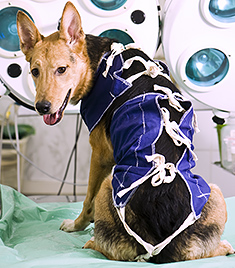
There has been some recent press about the risks of spaying and neutering, and it turns out this might be the veterinary world’s dirty little secret. There are many benefits to spaying and neutering, but there are also more than a few risks. Most people have decided that the benefits so far outweigh the risks that the risks aren’t worth talking about. We want to give you often overlooked information you need to make a full and informed choice.
The Irreverent Vet on PetPlace recently took on this controversial topic. His take on the topic is that neutering and spaying both carry some risks. Anesthesia is not totally without risk, as we all know.
However, he states that his concerns go beyond just the anesthesia and possible surgical complications. He points to numerous studies which point out health problems that are increased in pets who have been fixed. Although some of the studies are flawed scientifically, there is at least some evidence that problems as diverse as bone cancer, hip dysplasia, and urinary tract infections occur at a higher incidence in neutered and spayed animals.
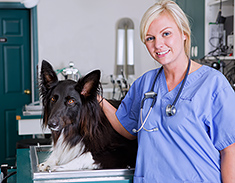
The Risks
A quick review of some of the studies available on this topic reveals that the Irreverent Vet is not entirely crazy. There is ample evidence to support the claim that spaying and neutering do carry some health risks, even aside from the well-known risk of obesity after the procedure. A few examples will illustrate the point.
-
Osteosarcoma: A 1998 study published in The Veterinary Journal reviewed canine deaths from osteosarcoma (bone cancer) among over 3000 purebred dogs. They found that the risk of developing cancer was twice as high among neutered dogs as it was among those who remained intact. (1)
Another study, published in 2002, noted that the age at which the dog is fixed may have an important influence on bone cancer. Dogs who were neutered or spayed before one year of age were significantly more likely to develop bone sarcoma than dogs that were sexually intact, which they interpreted to mean that healthy bone development requires at least some exposure to sex hormones over the first year of life. (2)
-
Hip Dysplasia: A 2004 study found that in Boxers, neutering is associated with a 1.5 times increase in the risk of hip dysplasia. However, there was no attempt to determine whether the weight gain associated with neutering was the cause of the hip problems, or if neutering in and of itself, contributed to dysplasia. (3)
-
Anterior Cruciate Ligament (ACL) Rupture: In several large breeds, including Akitas, Chesapeake Bay Retrievers, German Shepherds, Rottweilers, and St. Bernards, ACL rupture is more common after the gonads are removed. Even after researchers took into account the weight gain associated with neutering and spaying, they found that fixed dogs were more likely to have this problem with their knees. (4)
-
Urinary Incontinence: When female dogs are spayed, one side effect can be urine leakage resulting from weakness of the sphincter at the end of the urethra. It is thought that estrogen is important to the development of the musculature of the sphincter, with spaying before 3 months of age seeming to cause the biggest risk of eventual incontinence. (3)
In some studies, a wide variety of diseases, but only one breed, were studied, and no one knows if the findings would extend to other breeds as well. For example, a study at the veterinary hospital at UC Davis focused only on Golden Retrievers. They found that dogs who were neutered early were more likely to experience hip dysplasia, cruciate ligament tears, and lymphosarcoma than both intact dogs and those who were neutered late. In contrast, hemangiosarcoma and mast cell tumors were associated more with late neutering than with early neutering or remaining intact. (5)
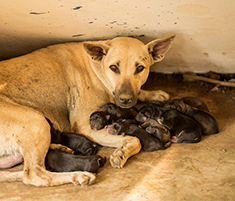
The Benefits
-
Mammary Cancer: The risk for mammary cancer goes up with the number of heat cycles your dog has before being spayed. One study shows a difference of 0.5% risk for animals spayed before their first heat cycle and a whopping 26% after two or more heat cycles. (6)
-
Overpopulation: The biggest benefit to spaying and neutering has always been that it prevents animals from reproducing and continuing the problem of pet overpopulation. Removing the sex organs of animals has been touted as the single best way to reduce shelter populations and euthanasia.
Many shelters and rescue groups will not release animals to adoptive homes until the animal has been fixed. Importantly, this means that dogs are being spayed and neutered at ever-younger ages. In many cases the risks associated with fixing a dog are mitigated as the dog ages, so early spaying and neutering can put your dog at a higher risk than necessary.
So, is it worth it to spay and neuter?
Nearly every vet, shelter worker, and responsible pet lover will tell you that spaying and neutering are both necessary and desirable because of the massive problem of overpopulation. While we don’t disagree, it is worth noting that it shouldn’t be an automatic response for every situation.
Different breeds have different health risks, and it’s worth considering your dog’s lifetime risk of contracting one of the diseases affected by spaying and neutering. For example, if your dog has a very small risk of developing mammary cancer, should you spay her just to reduce the risk by a few more percentage points? On the other hand, if osteosarcoma has a very low incidence in your breed, are you doing any harm by increasing this risk through neutering? Doubling a very small number results in a still very small number.
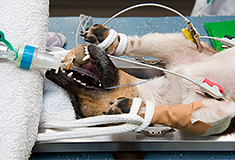
Alternatives
There are a few alternatives that accomplish the goal of preventing unwanted litters while not exposing your dog to additional health risks. One is to sterilize the animal without removing the organs that generate sex hormones. In males, this would be vasectomy and in females, this would be removing the uterus but sparing the ovaries.
Another option is to use traditional spaying and neutering surgery, but only after your dog reaches maturity. Both of these options, of course, can have a negative impact on the risk of mammary cancer, but can reduce the risk of the other problems associated with early spaying and neutering.
For male puppies, there is a relatively new product on the market called Zeuterin. This compound contains zinc gluconate and arginine, and is injected directly into the testicles of dogs between the ages of 3 and 10 months. It sterilizes the dog, but leaves him with the ability to produce testosterone.
Before you automatically ask your vet to spay or neuter your dog, take the time to find out the risks and benefits specifically associated with the procedures in your breed. Many vets have been recommending spaying and neutering at 6 – 8 months (or before!) for so long that they haven’t taken the time to read up on what they likely consider “fringe group” research. If your vet looks at you like you have three heads when you ask about the risks associated with spaying and neutering, consider doing the research yourself before you make your dog’s appointment. And if you ultimately choose not to spay or neuter, make sure you have a plan in place to prevent your dog from creating unwanted puppies.
Footnotes:
(1) Ru, G; Terracini, B; and Glickman, LT Host-Related Risk Factors for Canine Osteosarcoma. The Veterinary Journal 156(1): 31 – 39. July, 1998.
(2) Cooley, Dawn M., et al. Endogenous Gonadal Hormone Exposure and Bone Sarcoma Risk. Cancer Epidemio Biomarkers Prev 1434. November, 2002.
(3) Spain, CV; Scarlett, JM; and Houpt, Katherine. Long-Term Risks and Benefits of Early-Age Gonadectomy in Dogs. Journal of the American Veterinary Medical Association 224(3): 380-387. February, 2004.
(4) Whitehair, JG; Vasseur, PB; Willits, NH. Epidemiology of Cranial Cruciate Ligament Rupture in Dogs. Journal of the American Veterinary Medical Association 203: 1016 – 1019. 1993.
(5) de la Riva, Gretel Torres, et al. Neutering Dogs: Effect on Joint Disorders and Cancers in Golden Retrievers. Plos One DOI: 10.1371/journal.pone.0055937. February, 2013.
(6) Schneider, R; Corn, CR; and Taylor DON. Factors Influencing Canine Mammary Cancer Development and Post-Surgical Survival. Journal of the National Cancer Institute 43: 1249 – 1261. 1969.
Doggies Den: Latest Articles
 Homemade Thanksgiving Treats for Your Dog
Homemade Thanksgiving Treats for Your Dog
NUTRITION We all want to include our dogs in our holiday celebrations, but hopefully, you're aware that sharing table scraps with your dog isn't always the best idea.
 Keeping Your Dog Safe during the Summer Months
Keeping Your Dog Safe during the Summer Months
HEALTH Summer is coming on fast, so it’s time to plan how you will keep your dog safe and healthy through the lazy, carefree, warm days.
 Vaccination Time Again-Keeping Your Puppy Healthy
Vaccination Time Again-Keeping Your Puppy Healthy
DOG HEALTH So you have your new puppy picked out. There are quite a few shots, treatments and examinations that will keep the newest member of your family healthy.
 Canine Thanksgiving Feast
Canine Thanksgiving Feast
NUTRITION With the wide variety of food at Thanksgiving dinner, chances are you'll want to give your dog something special, too. If you're contemplating what to feed your dog for the holiday, here is a guide to a great Canine Thanksgiving Feast.
 Dog Walking Tips Every Owner Should Know
Dog Walking Tips Every Owner Should Know
DOG FUN Walking your dog is not only crucial to keeping him healthy and happy, it strengthens the bond between your canine friend and his caregiver. There are a lot of obstacles out there. Don’t forget these simple tips to keep your walk fun and safe in the outside world.
 The Benefits of Physiotherapy for your Dog
The Benefits of Physiotherapy for your Dog
HEALTH The same techniques that physiotherapists use to treat a variety of injuries and conditions in humans have been adapted to suit animals with great success. Family pets, show dogs, and working dogs can all benefit greatly from physiotherapy. Dogs whose activities involve a lot of agility are especially susceptible to the types of problems that physiotherapy can address.
 The Decision- Adding a Dog to Your Family
The Decision- Adding a Dog to Your Family
FIRST TIME OWNERSBringing a dog into your family is a decision where many people don’t realize it’s magnitude until after they have the dog. There are a number of things that you need to research before you decide to purchase a dog, and it starts right in your own home.
 Bringing Your Dog Into Your New Baby's Life
Bringing Your Dog Into Your New Baby's Life
HEALTH Many believe that a dog and a new baby cannot happily coexist, so therefore the dog has to go. This is not necessarily the case.  A new baby does not mean you have to abandon your dog.

Doggies Den:
Most Popular Articles

Dog Pregnancy Symptoms
HEALTHIf you suspect your dog might be pregnant, check out part one in this series on pregnant dogs, where we cover pregnant dog symptoms.
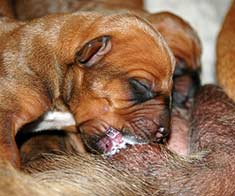
Dog Birth
HEALTHIn the third article of our dog pregnancy series, we look at the wonderful, but messy, process of bringing newborn puppies into the world.

Indoor Dog Potties
DOG PRODUCTSIt's been a long day at work. You were so busy, you didn't even take time to eat a sandwich, let alone run home to let your dog out. You're on your way home, knowing the poor dog is crossing his or her legs by now, when your car breaks down, delaying you even further. Can't somebody make this easier?
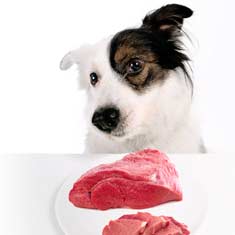
Your Dog’s Digestive System
PHYSIOLOGYEver wonder why your dog eats so fast? Or why he eats gross things? Or why he gets sick to his stomach? Or why his waste stinks so bad? Some of these things are normal, some are not.

Canine Respiratory System
BREATHINGThe basic function of your dog's respiratory system is to bring oxygen in to and remove carbon dioxide from the body. Knowing the symptoms of respiratory diseases can help you help your stay healthy.
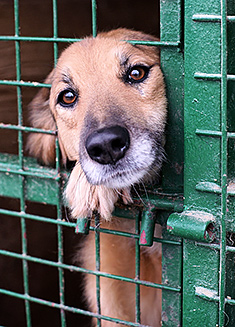
Shelter Dog Adoption Tips for Success
ADOPTION Are you intimidated by the prospect of "rescuing" a dog from a shelter? One reason that you may be wary of adopting a dog from a shelter is not knowing how to choose. Adopting a dog from a shelter can be a rewarding process, if you're prepared to do a reasonable amount of research.

Canine Urinary Tract Infections
SYMPTOMS AND TREATMENTDoes your dog seem to be having trouble relieving his or her bladder? Learn how to recognize the signs of urinary tract infections and how to treat them before they spread.

What to do for Dog Diarrhea
SYMPTOMS AND REMEDIESIf you have dogs in your house for any length of time, you have likely experienced at least one bout of dog diarrhea. Beyond the pain in the tuckus involved in cleaning up the mess, you should know what causes diarrhea, and when it's important to see the vet.

What to do for a Dog Bite
DOG BEHAVIOR Getting bitten by a dog can be scary, and you may be tempted to run around in circles for a while, trying to figure out what to do. Here's our guide to help you manage the situation.

Top Ten Tips for Living with a Senior Dog
DOG HEALTH Bringing home a new puppy is so exciting, but it doesn’t take all that long for your exuberant puppy to grow into a senior dog who may have special needs. Here are the doggies.com top ten tips for taking care of your companion who has been with you through so much.
